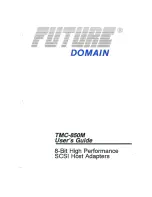
ETHERNET • 261
Modular I/O System
ETHERNET TCP/IP
5 ETHERNET
ETHERNET is a technology, which has been proven and established as an ef-
fective means of data transmission in the field of information technology and
office communication. Within a short time ETHERNET has also made a suc-
cessful breakthrough in the area of private PC networks throughout the world.
This technology was developed in 1972 by Dr. Robert M. Metcalfe, David R.
Boggs, Charles Thacker, Butler W. Lampson, and Xerox (Stanford, Ct.). Stan-
dardization (IEEE 802.3) took place in 1983.
ETHERNET predominantly uses coaxial cables or twisted pair cables as a
transmission medium. Connection to ethernet, often already existing in net-
works, (LAN, Internet) is easy and the data exchange at a transmission rate of
10 Mbit/s is very fast.
ETHERNET has been equipped with higher level communication software in
addition to standard IEEE 802.3, i.e. TCP/IP (Transmission Control Protocol /
Internet Protocol) to allow communication between different systems. The
TCP/IP protocol stack offers a high degree of reliability for the transmission of
information.
In the ETHERNET TCP/IP fieldbus coupler developed by WAGO, the fol-
lowing application protocols have been implemented on the basis of the
TCP/IP stack:
•
a MODBUS/TCP server,
•
a BootP client and
•
an HTTP server.
These protocols allow the user to create applications (master applications) with
standardized interfaces and transmit process data via an ETHERNET interface.
Information such as the fieldbus node architecture, network statistics and diag-
nostic information is stored in the fieldbus coupler and can be viewed as
HTML pages via a web browser being served from the HTTP server in the
buscoupler (Microsoft Internet-Explorer, Netscape Navigator,...). Through the
WAGO IO Pro 32 software it is possible to create your own webpages and
store them in the coupler for control of the PFC program (this is for the 750-
842 PFC only.)
The WAGO ETHERNET TCP/IP fieldbus coupler does not require any addi-
tional master components other than a PC with a network card. The fieldbus
coupler can be easily connected to local or global networks using the RJ45
connector. Other networking components such as hubs, switches or repeaters
can also be used. However, to establish the greatest amount of “determinism”
a switch is recommended.
The use of ETHERNET as a fieldbus allows continuous data transmission
between the plant floor and the office. Connection of the ETHERNET TCP/IP
fieldbus coupler to the Internet even enables industrial processing data for all
Содержание I/O-SYSTEM 750
Страница 334: ...330 Notes Modular I O System ETHERNET TCP IP ...
















































